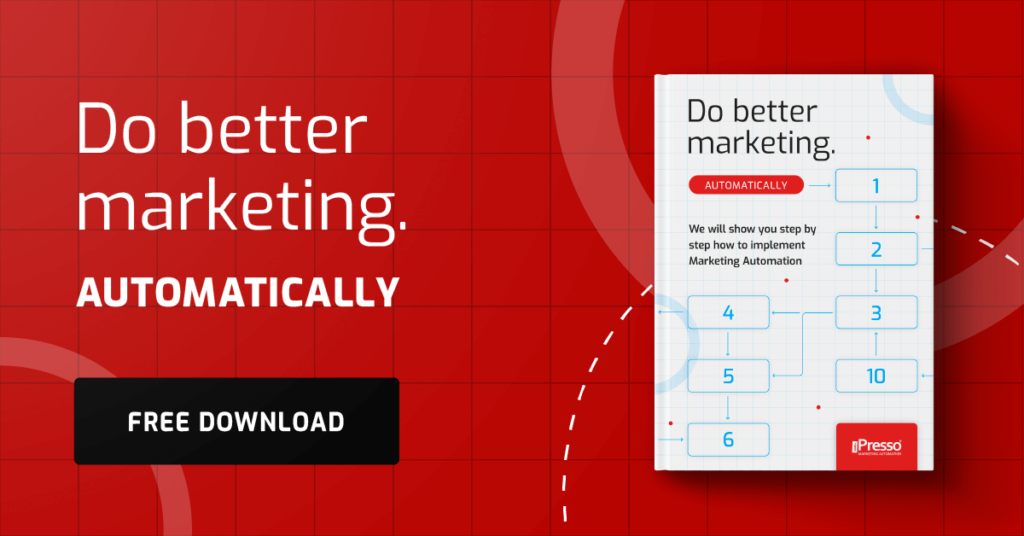How marketing automation can help you increase AOV

If you run an online store, AOV (average order value) is one of the most important metrics to which you should pay attention. The higher your AOV is, the more profitable each customer is, and you can invest more money to get more customers. In this post, we will show you how you can use marketing automation to increase AOV in your store. Let’s have a look!
Usually, there is one repeatable scenario: You have a customer who opens your store’s website and starts browsing your products. When they find what they’ve been looking for, they put the product in the cart. That’s when the average order value reaches its initial number. If this customer decides to buy just one product, AOV equals the price of this one product.
However, if the customer decides to add more products to the card, the average order value becomes the sum of all the products in their cart. So, there are two ways to increase AOV in your online store:
- Get customers to buy more products within one order
- Get customers to buy more expensive products
Even better, if you can combine both ways in one order. This way, you can hit “e-commerce jackpot” so to speak. Now, let’s have a look at how you can do so using marketing automation tools for online stores.
Recommendation frames
Personalized products recommendations can be very effective when it comes to encouraging your customers to buy more products. Our recommendation frames analyze data about the customer’s behavior – such as shopping and browsing products. They then use this input to recommend products that should interest this person. As a result, you can get your customers to buy more products.
Our recommendation frames can be integrated with Vertex AI to make them more effective. There are several options for you to choose from. You can use them to display product recommendations in different places on your website (e.g., the main page, product tabs, or the cart page):
- Others you may like: This function predicts the next product the user is most likely to be interested in. Prediction based on the user’s purchase and browsing history.
- Frequently bought together: Predicts products frequently bought together in one shopping session.
- Recommended for you: Predicts another product that the customer is likely to buy or at least be interested in. This recommendation is usually used on the home page.
- Similar items: Predicts other products with attributes similar to the product under consideration. The recommendation is useful on product pages.
On-site messages
Your customers frequently just wander around your store, just browsing products and looking for inspiration. Such customers are usually willing to buy, but they’re just not sure what they want. In such a situation, on-site messages or pop-ups can be very effective. Imagine such a customer looking at some products in your store when the on-site message pops up and recommends that they visit the sales section on your website, where products are discounted up to 60%! Such a message can immediately trigger your customers to visit this section and buy some of the discounted products.
Of course, it’s just one idea of how you can use on-site communication. You can combine many different messages that comprise the following elements:
- Push notifications
- Boxes, banners, and slides
- Overlays
- Messages with the contact form
The key to success here lies in selecting the right moment to display such an on-site message. In many cases, it’s good to display them to customers who have been in your store for at least a few minutes, but if you can come up with different ideas, they are surely worth testing as well!
Communication scenarios
Sometimes, customers reach out to your store’s customer service to ask about products. It’s a perfect moment to use our communication scenarios which can comprise upselling and cross-selling. Take a look at an example of such a conversation:
In this instance, the conversation happens on WhatsApp, but you can use other channels as well. And because this scenario has been preprogrammed in our system, this conversation happens 100% on auto-pilot. So, your marketing automation tool can close more deals for you while you sleep! MA scenarios are one of our most versatile tools. Find out more about them because they can offer dozens of different applications in the e-commerce world!
Responding to abandoned processes
Lastly, you can increase the average order value in your online store by re-engaging potential customers who have shown interest in your products but failed to complete their transactions. Abandoned processes are very common in e-commerce, and if you don’t do anything about them, you lose hundreds (or even thousands) of dollars every month.
By using automated reminders, you can encourage shoppers to return and finalize their purchases. Here, you can also use upselling or cross-selling if possible! For instance, an abandoned cart email could not only remind the user of their pending items but also include a limited-time discount or a bundle deal. This way, you can encourage your customers not just to return and buy what they wanted in the first place but even add more to their cart!
We offer six different types of responses to abandoned processes, each can be very useful:
- Automatic reminder emails: You can set up automatic reminder emails for users who haven’t finished the purchasing, registration, or other process.
- Personalized offers: You can adjust offers and discounts in response to process abandonment. Personalized promotions can encourage users to come back and complete the order.
- Retargeting: Use retargeting to show online ads to users who have left your website without buying anything.
- Dynamic content on the website: Customize content on the website based on the user’s previous activities.
- Automatic registration forms: Make it easier for users to return to an abandoned process by offering automatic sign-up forms or restoring previous data.
- Customization of content marketing campaigns: Lastly, you can incorporate specific content into your content marketing campaigns to addresses questions that may have caused your customer to abandon the order.
Wrapping up
In this post, we showed you four ways to increase the average order value in your store. You can use them separately or combine them into one holistic strategy. Implementing these strategies can help you encourage more customers to return to your store and/or buy more products.
If you’d like to test how iPresso works, you can start by telling us a bit more about your company. You can do so here. Let’s grow your e-commerce business together!



